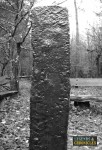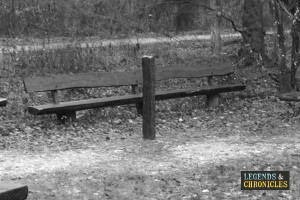The Iron Man Pillar
Known as the Iron Man, the Iron Man pillar, Der Eiserner Mann in its native German, or even the Iron Man in the Kotternforst, this ancient iron pillar goes by many names and is a true ancient artifact.
What’s really interesting about this ancient artifact is its raw and unrefined nature, it’s a simple, plain looking, due to the way it was cast and a rather large piece of iron that dates all the way back to the 17th century.
The pillar itself is a large metal, almost square shaped object that stands at over three metres tall, making it a rather large chunk of metal for the 17th century, and even an impressive sight to this day.
An immovable marker
The Iron Man due to its large size and nature was an excellent marker back in the 17th century and even now it still suffices. With the majority of the pillar underground, the Iron Man would have proved to have been a chore for any man to move. This quality made the Iron Man an excellent marker as those using it would have known it would be unlikely to have its position tampered with.
The construction of the Iron Man pillar
The Iron Man pillar was always known to be made from metal but until the 1970’s it wasn’t known exactly what type. A metallurgical test was actually done on the pillar in the 1970’s and the results came back marking the pillar as pig iron. Pig iron is typically considered a transitional metal, made from the smelting of ore with an additional fuel mixed in, the added carbon in the mix can make this type of iron rather brittle.
The technique used for the creation of the pillar is thought to have been a traditional pig iron technique where the molten metal would be poured into a trench, which would then flow into some earth moulds. This technique would provide the Iron Man with its hand made appearance.
Unique features of the Iron Man
The pillar has plenty of unique features, but one of the most intriguing is the limited amount of corrosion the pillar has suffered over the years. For an iron item dating back to the 17th century the Iron Man remains in amazing condition. There are similar iron pillars in asia that have aged with similar grace and it’s testament to the metal working skills of the time that they were able to produce a piece of iron that would last like the Iron Man.
One of the other unique features of the Iron Man is its location. The pillar is the only known example of a marker of this kind in Europe, meaning that it was a one off item, a test item, or potentially a freak pillar. If this was not a one off pillar, then we would presume to have found more pillars, unless they did in fact suffer from some corrosion, and were essentially destroyed.
The location of the Iron Man
The Iron Man pillar currently stands in Kottenforst-Ville a national park in Germany, where it has stood since 1727. At this time it was moved to serve as a marker for some planned hunting paths at the request of Prince Elector Clemens. Previous to this the pillar was documented in 1625, the earliest known date of the pillars existence, as having marked the border line along a Roman aqueduct near to Heimerzheim.
Summary of the Iron Man of Kottenforst
The Iron Man is one of the man ancient artifacts that lives somewhere unexpected, often finding itself named as an out of place artifact. As the only known iron pillar of its kind in Europe, the pillar is truly unique, and fully worthy of its status as an ancient artifact of note.

